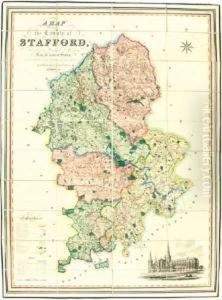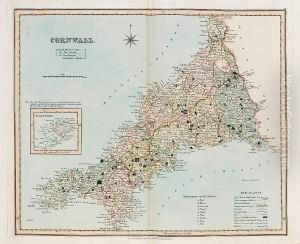Henry Teesdale Paintings
Henry Teesdale was a British publisher and mapmaker who was active in the early 19th century. Not much is known about his early life, including the exact year of his birth, which is estimated to be around 1776. Teesdale established his publishing business in London, and over the years, he became known for producing high-quality maps and atlases.
In the early 19th century, there was a significant interest in geography and cartography, partly fueled by the expansion of the British Empire and the general thirst for knowledge during the Enlightenment. Teesdale capitalized on this interest by producing maps that were not only detailed and accurate but also aesthetically pleasing. His works often featured finely engraved details and were hand-colored, which made them both useful and decorative.
One of Teesdale's most notable works was the 'New British Atlas,' which he published in collaboration with the well-known engraver John Dower. This atlas contained a series of maps that were praised for their clarity and precision. Teesdale also published various other maps and charts, including those focused on individual English counties as well as parts of the British Empire and other regions of the world.
Teesdale's contributions to cartography were part of a larger movement during the time that saw significant advancements in the field. His work was characterized by a commitment to improving the accuracy and quality of maps. Despite the importance of his maps in the history of British cartography, Teesdale's life remains relatively obscure, and little is known about his personal life or his professional trajectory beyond his published works.
Henry Teesdale died in 1836, leaving behind a legacy as a distinguished mapmaker of the Regency and early Victorian periods. His maps continue to be of interest to collectors and historians for their representation of geographical knowledge during a period of British history marked by exploration, scientific advancement, and imperial ambition.

